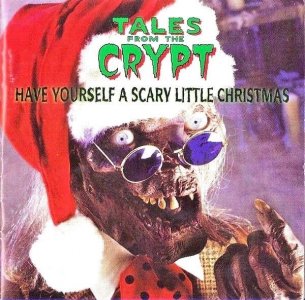Jace
Well-known Member
Since the 1300s, caroling has been almost synonymous with Christmas.
The first Carols, however, were used during Advent, Epiphany and Easter and
only later became associated with Christmas.
The word "carol" comes from the Old French "Carole" which was a spirited dance with
musical accompaniment. During the Middle Ages, a carol came to be any religious song
with several refrains, strong rhythms and a characteristic lilt.
Most carols originated in England in the 1400s and were religious and secular in nature.
While kept anonymous, they were usually penned by clerics and court musicians and
often appeared in sacred Miracle Plays.
The first printed Carols date from 1523 and include the "Boars Head Carol" which is still performed at Queen's College in Oxford also "I Saw Three Ships".
Before the 1400s, the poetic content of Carol spanned from the satirical and humorous
to the sacred and profound. During the British Reformation of he 1500s the carol matured and exclusively became "a song about Christmas for Christmas singing."
Despite it's popularity, caroling all but disappeared between 1647-1865.
English Puritans who migrated to the U.S disapproved of caroling and the celebration of religious feast days. Thus, for the next two centuries, caroling was considered an interior art form, confined to the uneducated.
By the early 1800s, Carlols began to be collected and written down in the U.S.
Many classics, like "Hark, the Herald Angels Sing", "Joy to the World" became known
as Christmas hymns. Unlike their medieval counterparts, these carols were formal and didactic. As caroling flourished throughout he 1900s, it formality disappeared.
Most carols sung today come from France, Germany and the U.S.
France contributed "Angels We Have Heard on High", Germany produced "Silent Night".
America is best known for "O Little Town of Bethlehem" and "It Came upon a Midnight Clear".
Were you ever in a group to go caroling?
The first Carols, however, were used during Advent, Epiphany and Easter and
only later became associated with Christmas.
The word "carol" comes from the Old French "Carole" which was a spirited dance with
musical accompaniment. During the Middle Ages, a carol came to be any religious song
with several refrains, strong rhythms and a characteristic lilt.
Most carols originated in England in the 1400s and were religious and secular in nature.
While kept anonymous, they were usually penned by clerics and court musicians and
often appeared in sacred Miracle Plays.
The first printed Carols date from 1523 and include the "Boars Head Carol" which is still performed at Queen's College in Oxford also "I Saw Three Ships".
Before the 1400s, the poetic content of Carol spanned from the satirical and humorous
to the sacred and profound. During the British Reformation of he 1500s the carol matured and exclusively became "a song about Christmas for Christmas singing."
Despite it's popularity, caroling all but disappeared between 1647-1865.
English Puritans who migrated to the U.S disapproved of caroling and the celebration of religious feast days. Thus, for the next two centuries, caroling was considered an interior art form, confined to the uneducated.
By the early 1800s, Carlols began to be collected and written down in the U.S.
Many classics, like "Hark, the Herald Angels Sing", "Joy to the World" became known
as Christmas hymns. Unlike their medieval counterparts, these carols were formal and didactic. As caroling flourished throughout he 1900s, it formality disappeared.
Most carols sung today come from France, Germany and the U.S.
France contributed "Angels We Have Heard on High", Germany produced "Silent Night".
America is best known for "O Little Town of Bethlehem" and "It Came upon a Midnight Clear".
Were you ever in a group to go caroling?


